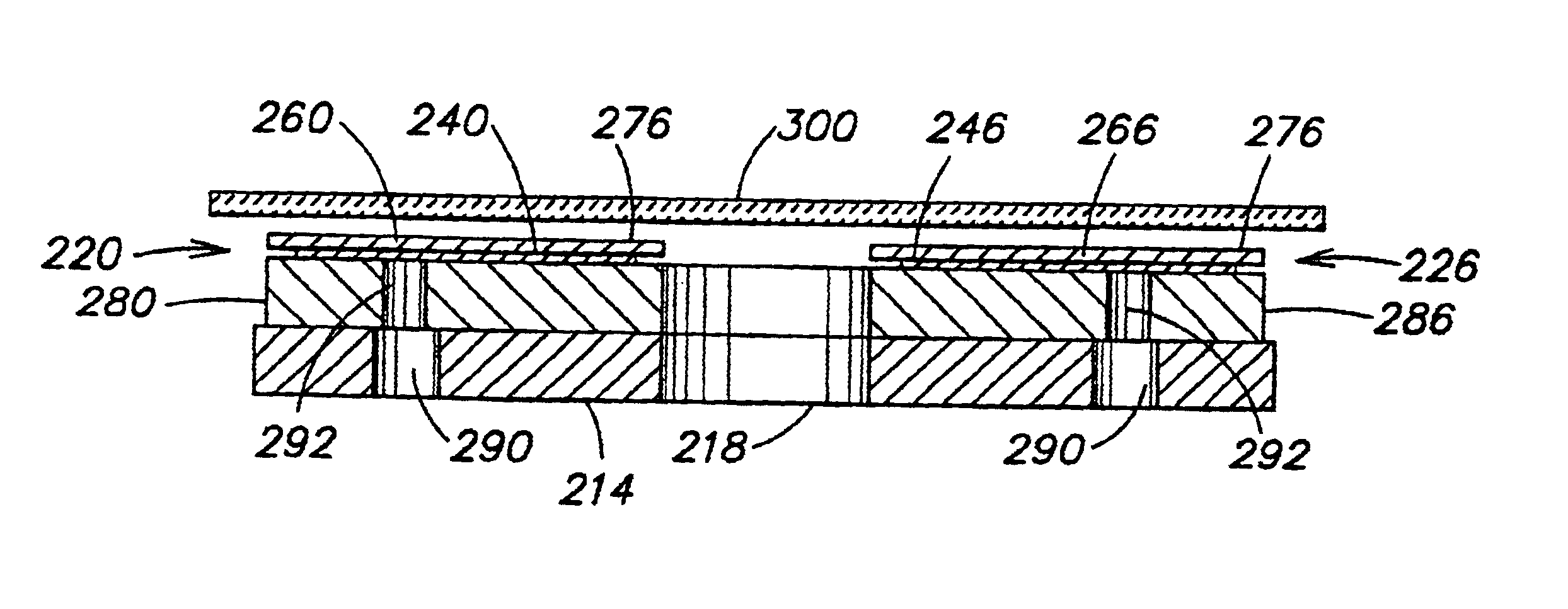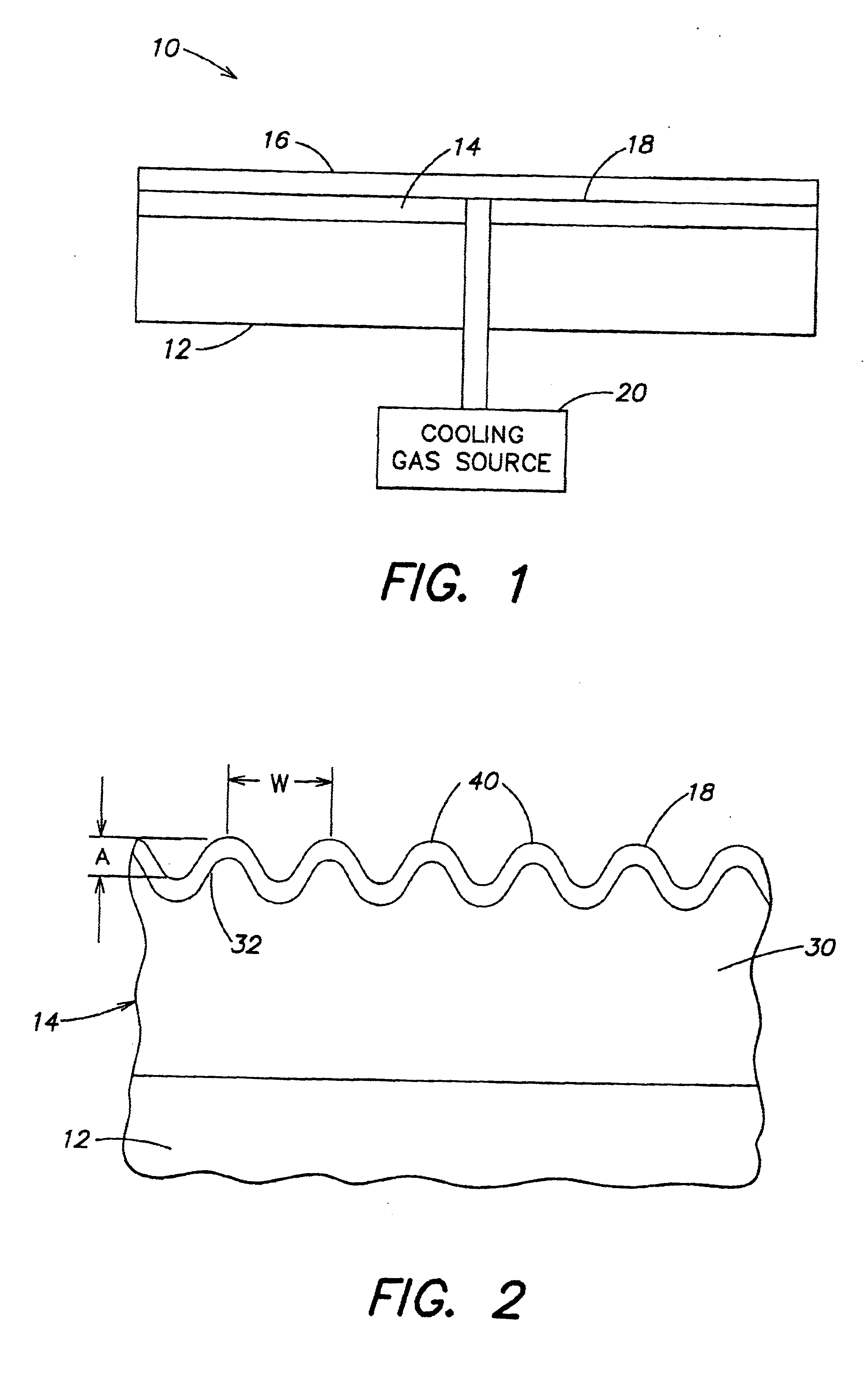Surface structure and method of making, and electrostatic wafer clamp incorporating surface structure
a surface structure and electrostatic technology, applied in electrostatic charges, capacitors, electrical devices, etc., can solve the problems of uncontrollable diffusion of impurities beyond the described limits of the wafer, inability to meet the requirements of the substrate, and degradation of the patterned photoresist layer, etc., to achieve good structural integrity, efficient thermal transfer, and good shear strength
- Summary
- Abstract
- Description
- Claims
- Application Information
AI Technical Summary
Benefits of technology
Problems solved by technology
Method used
Image
Examples
second embodiment
a surface structure is shown in FIG. 5. The surface structure provides low particle generation low particulate contamination of a workpiece, is resistant to molecular contamination and can be made to have either conducting or insulating electrical properties as needed. The surface has low abrasion properties and is therefore unlikely to cause damage, even on a microscopic scale, to a workpiece. The surface is resistant to external contamination and is relatively durable, and may be cleaned if necessary.
A surface structure 90 includes a workpiece support element 100, which may be made of any material. Examples include electrical and thermal conductors, such as aluminum, and electrical insulators, such as alumina. The surface structure 90 further includes an optional adhesive interface layer 102, a resilient, flexible layer 104 and a coating 106. The support element 100 must be chemically compatible with flexible layer 104 if flexible layer 104 is applied directly to support element 1...
PUM
 Login to View More
Login to View More Abstract
Description
Claims
Application Information
 Login to View More
Login to View More - R&D
- Intellectual Property
- Life Sciences
- Materials
- Tech Scout
- Unparalleled Data Quality
- Higher Quality Content
- 60% Fewer Hallucinations
Browse by: Latest US Patents, China's latest patents, Technical Efficacy Thesaurus, Application Domain, Technology Topic, Popular Technical Reports.
© 2025 PatSnap. All rights reserved.Legal|Privacy policy|Modern Slavery Act Transparency Statement|Sitemap|About US| Contact US: help@patsnap.com



